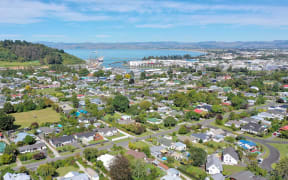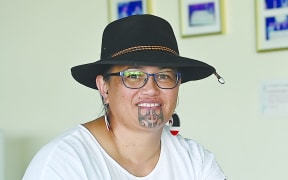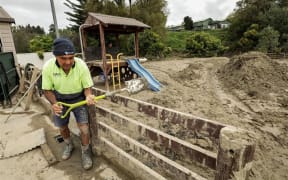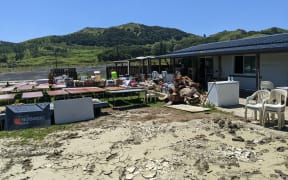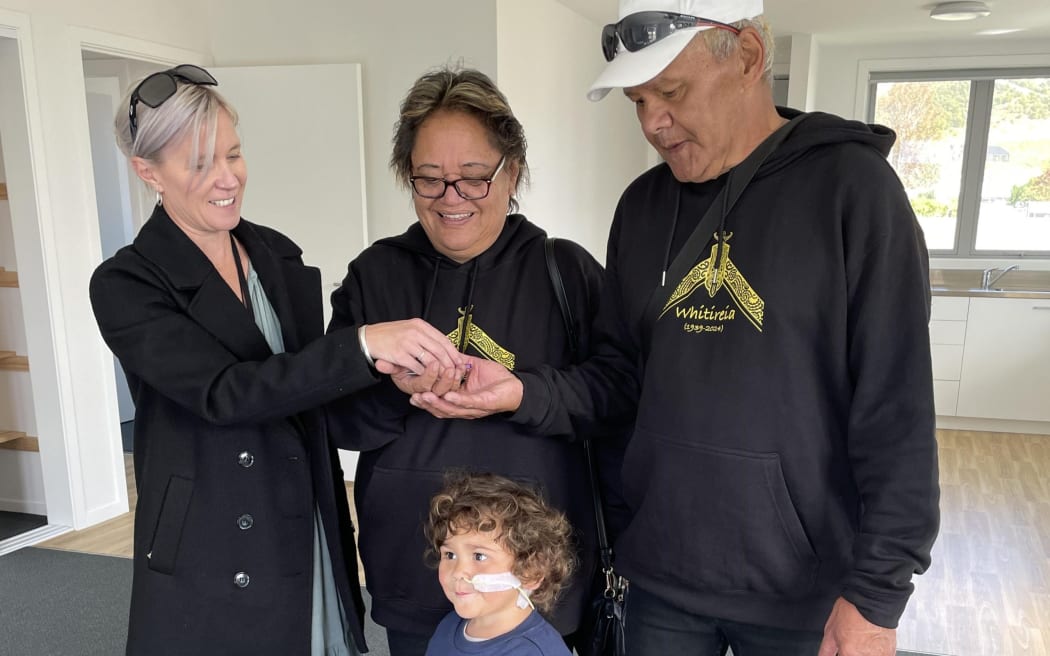
Lena and William Bennett, with grandson Charlie-James Pihama, receive their keys from their housing support manager Nicole Totoro, after living in a bach for two years. Photo: Local Democracy Reporting
One family lived in a tent during the cyclone. Another ended up in emergency housing and even slept in a truck one night. And a couple had nowhere to go so lived with family for two years. These are the stories of local people who now have new affordable homes in the Kāinga Ora Worsley Street development. Zita Campbell reports.
Just over a year ago, a mother of three found herself living in tents with her children during Cyclone Gabrielle.
Now she finds herself and her family in the newly built Worsley Street Kāinga Ora development.
After a year of raising her children in a hotel, she describes her search for accommodation as "awful".
Kāinga Ora managed and maintained about 65,000 public houses and placed people into those houses from the Housing Register.

Associate Housing Minister Tama Potaka announced last week that whānau with tamariki growing up in emergency housing would be prioritised for social housing.
The Gisborne mother, who wished to remain anonymous, said she had initially moved back home from Australia to see her father who was in palliative care.
"It was an awful time," she said of her tenting situation.
"All of my kids' clothes and stuff got damaged during the cyclone.
"I packed up the tents and drove to Work and Income ... I refused to leave until I was seen.
"I broke down in tears," she said.
"I was so exhausted I ended up falling asleep in their offices."
There were 81 households in emergency housing in Gisborne, according to recent data from the Ministry of Social Development (MSD).
Those households had a total of 78 children.
Another mother of four said she first applied for emergency housing in 2018. After that, several temporary living situations fell through.
Over the years, she and her children shifted between emergency housing, family places and a cabin.
The family of five slept in a truck one night.
"We had to move to places that were not always suitable," she said.
"It's been a roller-coaster for the last three to four years for me and my children."
The woman had an 8-month-old baby and children aged 2, 6 and 8.
"I'm so grateful that journey has finally ended and we have settled into our family home."
She advised people in her position to speak up.
"I was speechless when I found out about the house.
"After everything we have been through, it was so big."
MSD regional commissioner Karen Bartlett said in a statement that moving 24 tamariki into a secure and stable home was a reason to celebrate.
"We know temporary and emergency accommodation is not an ideal way to raise a family," she said.
A couple who moved into the development described themselves as "the lucky ones".
The couple were nervous to find out whether they would be able to move in because of the high demand for the Worsley Street build.
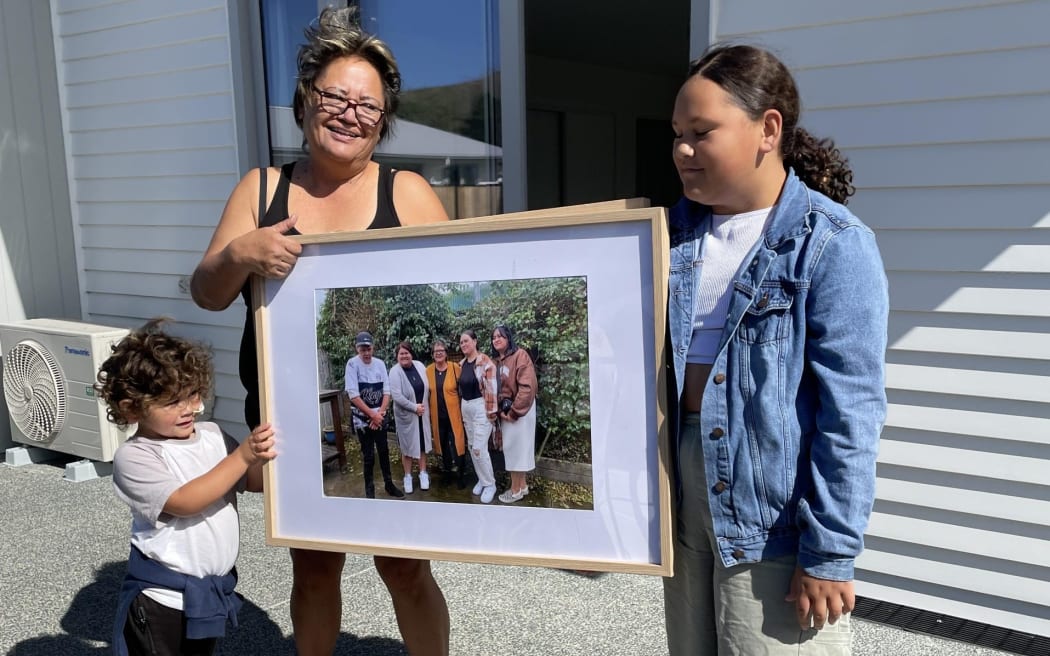
Lena Bennett and her moko about to put a whānau photo on the wall of their new home. Photo: Local Democracy Reporting
Lena and William Bennett, in their late 60s, said it was "highly important" Kāinga Ora continued its work, as many people were in need.
When the Bennetts' 11-year tenancy came to an end, they said it was impossible to find an affordable rental.
"Gisborne prices have become like Auckland prices - I don't see why," Lena Bennett said.
Their circumstances forced them to live in a family bach for two years. Whenever they needed necessities, such as the bathroom or water, they had to walk to the main house.
She hated to think what their circumstances would have been without their family.
"It was nerve-wracking waiting for the call. We were the lucky ones," she said.
Tai Rāwhiti was expected to need an additional 5000 homes by 2050 and public consultation would soon begin on a strategy to address this issue.
Gisborne District Council's Future Development Strategy had been under development since 2022 to accommodate the region's population growth and housing affordability.
Kāinga Ora regional director for East North Island Naomi Whitewood told Local Democracy Reporting that over the last three years "we have invested $82,743,500 in the Gisborne economy redeveloping homes on Kāinga Ora land and purchasing newly built homes off developers".
"We have 150 new homes in progress.
"These homes are expected to be completed and ready for whānau to move into over the next two years. We are looking into the feasibility of developing other sites that would result in another 60 new homes," she said.
"Kāinga Ora are delivering the extra state houses in Gisborne that have been budgeted for in the Ministry of Housing and Urban Development's Public Housing Plan extended through to June 2025. The plan identifies Gisborne as a priority area for more housing."
LDR is local body journalism co-funded by RNZ and NZ On Air.
